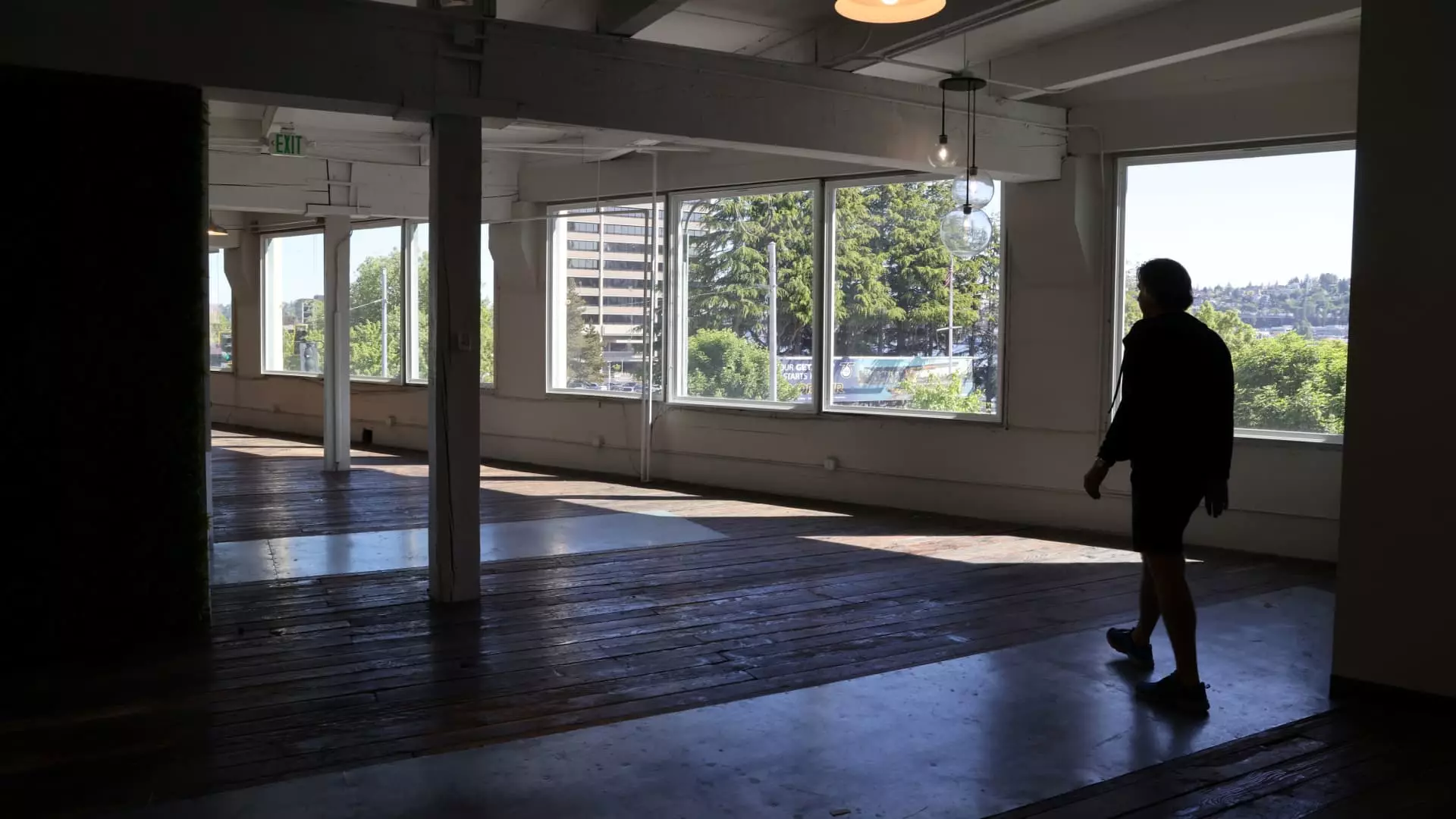As the U.S. office market continues to grapple with the aftermath of a tumultuous few years, it finds itself at a historical crossroads. In a development that feels akin to a seismic shift in the commercial real estate landscape, the year 2023 marks a stark transition: for the first time in a quarter-century, office conversions and demolitions have outpaced new constructions. This phenomenon, while promising on the surface, reveals deeper issues that point to a fragile future for traditional office spaces, particularly as remote work entrenches itself in corporate culture.
The statistics tell a harrowing story. A recent report from CBRE Group indicates that by the end of this year, a staggering 23.3 million square feet of office space across the largest U.S. markets is scheduled for demolition or repurposing. In stark contrast, developers are only projected to finish a mere 12.7 million square feet of new office space. This trend not only signals a net reduction in square footage but also reflects an emerging reality where less is clearly becoming more, albeit under stressful circumstances for many involved.
The Rise of Remote Work: Why Offices Are Becoming Redundant
The push toward remote work has radically redefined the purpose and necessity of the traditional office. As companies embrace flexible work arrangements, office vacancies have surged toward an alarming 19%. Initially perceived as a temporary response to the pandemic, this shift may well be a permanent fixture in the employment landscape. While some organizations are calling employees back to their desks, many workers are hesitant, preferring to navigate their careers on their own terms—often from the comfort of their homes.
This evolving attitude presents a complicated challenge for commercial real estate. The traditional allure of office spaces is waning, creating an oversaturated market rife with vacant units. Although there is a flicker of optimism with a slight uptick in net absorption sizes, one must also recognize that six consecutive quarters of negative absorption set a precedent that is hard to ignore. The labor market, while tightening, still faces an uphill battle concerning the adaptability of office spaces to serve modern needs.
Challenges to Conversion: An Uphill Battle for Developers
While the current circumstances create an apparent opportunity for conversions—such as transforming old office buildings into residential units—the reality is that this remedy isn’t straightforward. Challenges are rife, including limited availability of quality buildings suited for conversion and ever-rising costs associated with construction labor, materials, and financing. Although developers are reportedly eyeing over 85 million square feet of office space for potential repurposing, the question remains as to whether they can execute these projects efficiently and effectively.
Moreover, conversions have yielded promising results in previous years—approximately 33,000 apartments and condominiums since 2016—but the sustainability of such endeavors is in question. As the pool of ideal properties shrinks, developers may find it increasingly unfeasible to generate the anticipated yield. What was once considered an enticing opportunity could quickly devolve into a quagmire of financial strain and operational headaches.
Potential Outcomes: A Future with Less Vacancy but More Uncertainty
While proponents of the commercial real estate sector might argue that a reduction in overall office space will eventually result in lower vacancy rates, this perspective does not take into account the long-lasting implications of a changing workplace culture. As more office spaces become obsolete, the vibrancy of neighborhoods and the very fabric of urban centers may begin to erode. Stripping away commercial spaces could risk undermining the economic and social infrastructure that defines thriving cities.
On the flip side, certain specialized markets offering prime office locations and modern Class A spaces are expected to experience a revival of sorts. As demand fluctuates, it is likely that select office REITs will emerge as key beneficiaries. This reality seeks to normalize the market, yet it simultaneously amplifies the risk of a bifurcated market where only the most adaptable spaces thrive while the rest are left to gather dust.
One thing is certain: as the U.S. office market strives to redefine itself post-pandemic, the ongoing transformation will render both opportunities and challenges that cannot be underestimated. The question isn’t just about how many square feet are left standing; it’s about whether those spaces will find a purposeful place in a swiftly evolving economic reality.

